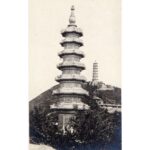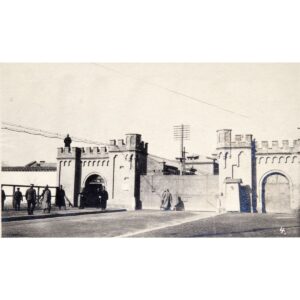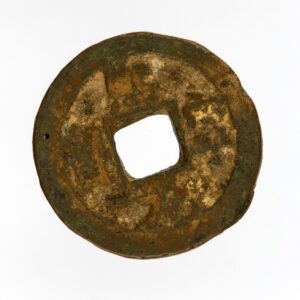Photography Copper Etching on Paper – Original theatre in the Old Summer Palace
A black-and-white photograph showing a printed image of the Xieqiqu 諧奇趣 Fountain theatre in the Old Summer Palace (Yuanmingyuan 圓明園) in Beijing called the “European Pavilions” (Xiyanglou 西洋楼). It was designed by the Jesuit Giuseppe Castiglione (1688–1766).
It is one of a series of twenty copperplate engravings commissioned in 1783 by Emperor Qianlong (reigned 1735–1796) and printed three years later. The engravings, collected in Twenty Views of European Pavilions in the Old Summer Palace, were designed and probably produced by the court artist and Castiglione’s pupil Yi Lantai 伊兰泰 (1749–1786). The inscription in the upper right-hand corner indicates that this is the second image in the album, showing the north façade of the Xieqiqu Fountain.
The copper engravings are an important pictorial record of the European pavilions in the Old Summer Palace, the greatest expression of Emperor Qianlong’s interest in European art. ... more
A black-and-white photograph showing a printed image of the Xieqiqu 諧奇趣 Fountain theatre in the Old Summer Palace (Yuanmingyuan 圓明園) in Beijing called the “European Pavilions” (Xiyanglou 西洋楼). It was designed by the Jesuit Giuseppe Castiglione (1688–1766).
It is one of a series of twenty copperplate engravings commissioned in 1783 by Emperor Qianlong (reigned 1735–1796) and printed three years later. The engravings, collected in Twenty Views of European Pavilions in the Old Summer Palace, were designed and probably produced by the court artist and Castiglione’s pupil Yi Lantai 伊兰泰 (1749–1786). The inscription in the upper right-hand corner indicates that this is the second image in the album, showing the north façade of the Xieqiqu Fountain.
The copper engravings are an important pictorial record of the European pavilions in the Old Summer Palace, the greatest expression of Emperor Qianlong’s interest in European art. The pavilion, along with the rest of the Summer Palace, was destroyed by English and French troops in 1860 during the Second Opium War.
The photograph is the 344th of 449 photographs of Beijing and its surroundings in the album of Ivan Skušek Jr., purchased during his stay in Beijing (1914–1920). In the handwritten inventory of the album, the photograph is referred to as Yüen-Ming-Yüen: Theater (nach orig. Bild). (DZ, MV)





































Do you have a comment or additional information about the subject?